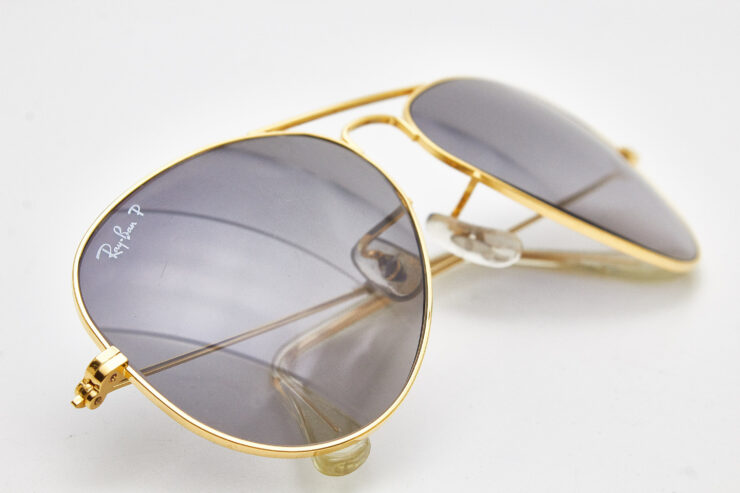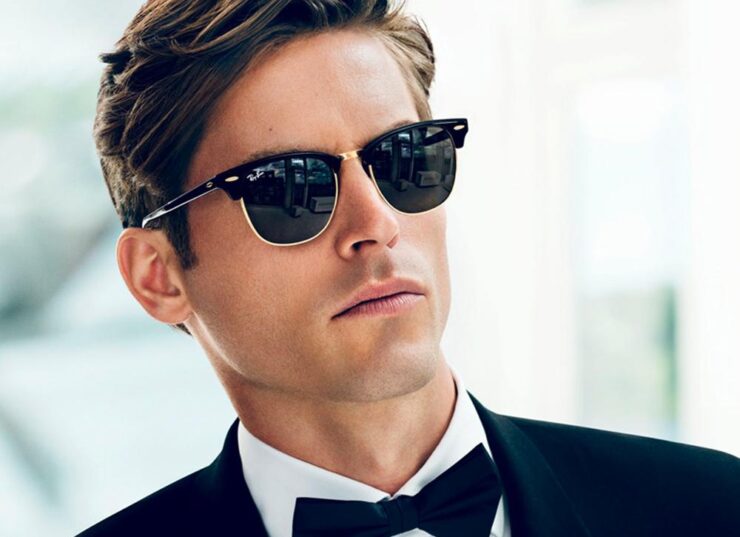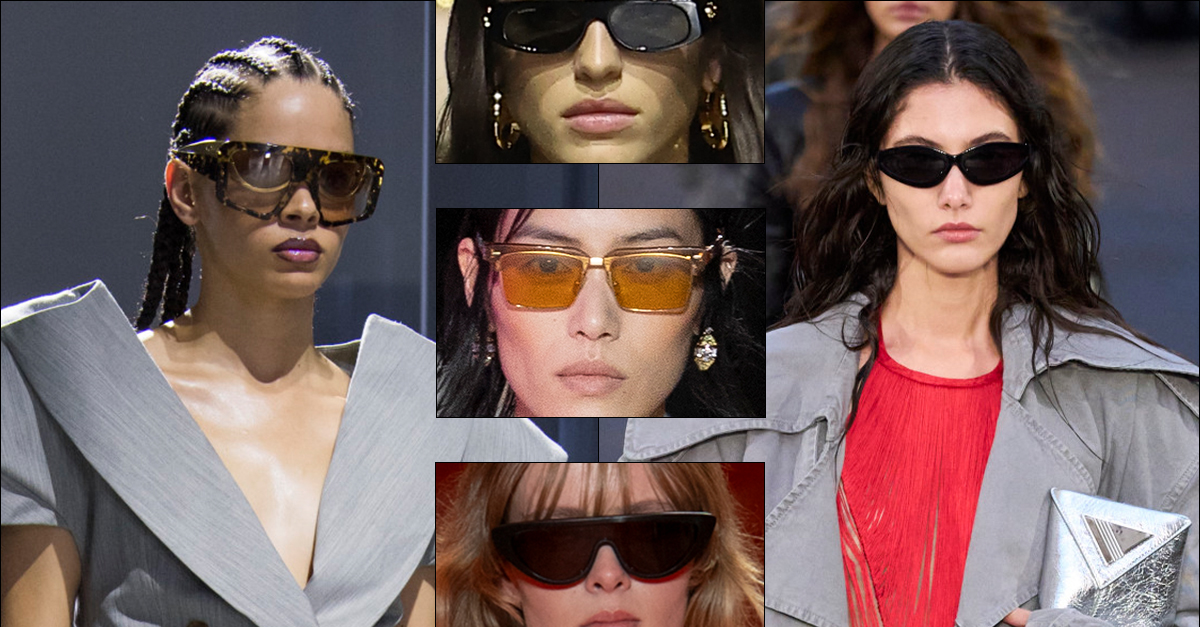
Imagine a world where the glare of the sun is forever tamed, where style meets function effortlessly. This is the world Ray-Ban has crafted since its inception. A titan in the eyewear industry, Ray-Ban has become synonymous with the fusion of fashion and utility. Their sunglasses have shaded the eyes of movie stars, political figures, and fashion icons, becoming a universal symbol of cool. As we explore the historical journey of Ray-Ban sunglasses, we’ll uncover how this brand has remained at the forefront of eyewear innovation and cultural relevance.
The Birth of Ray-Ban
The story of Ray-Ban began with Bausch & Lomb, an American company known for its medical instruments, pharmaceuticals, and contact lenses. In the early 1930s, they were approached by a U.S. Army Air Corps lieutenant who reported that the intense glare of the sun was causing pilots to suffer headaches and altitude sickness. Recognizing the need for protective eyewear, Bausch & Lomb created the original Ray-Ban sunglasses, designed to cut out the harsh sunlight and reduce distractions from the intense blue and white hues of the sky.
It was in 1937 that the iconic Aviator sunglasses were introduced to the world. With their distinctive teardrop shape and green lenses, they were not just a tool for pilots but a statement. The design was patented, and the Aviator quickly became the first blockbuster style of Ray-Ban, setting a precedent for the brand’s innovative approach to eyewear.
World War II and Ray-Ban
During World War II, Ray-Ban solidified its relationship with the U.S. military, supplying sunglasses to American pilots. The rugged demands of aerial combat required eyewear that was both functional and durable, and Ray-Ban delivered. The brand developed the Ray-Ban Shooter model during this time, featuring a unique “cigarette-circle” design that allowed pilots to hold their cigarettes while keeping their hands free.
The end of the war didn’t diminish the popularity of Ray-Ban; in fact, it was quite the opposite. Soldiers returning home brought their Ray-Ban sunglasses with them, introducing them to a civilian population ready to emulate the heroes of the era. This transition from military gear to a must-have accessory of the everyday person marked a pivotal moment in Ray-Ban’s history, as the brand began to symbolize the bravery and coolness of the American spirit.
The Wayfarer Revolution

The 1950s saw Ray-Ban breaking new ground with the introduction of the Wayfarer model. Unlike the metal frames of the Aviators, the Wayfarer featured a radical new plastic molding technology that allowed it to have a distinctively different look. This was a bold move away from traditional metal eyewear, and it paid off. The Wayfarer’s thick frames and slightly rebellious flair caught the attention of Hollywood’s elite, cementing its status as an icon of mid-century style.
The cultural impact was immediate and far-reaching. The Wayfarer became the eyewear of choice for movie stars both on and off the screen, appearing in classic films and becoming a part of the celebrity uniform. Over the years, the design has evolved, but the original silhouette remains largely unchanged—a testament to its timeless design.
The 1980s and Pop Culture
Fast forward to the 1980s, and Ray-Ban had become an emblem of the era’s vibrant pop culture. The brand took center stage in some of the decade’s most influential films. Who could forget Tom Cruise sliding across the floor in “Risky Business” wearing Wayfarers, or the Aviators that shielded the eyes of Maverick in “Top Gun”? These moments were more than just product placements; they were cultural landmarks that embedded Ray-Ban into the fabric of the 80s.
This decade also saw Ray-Ban as a symbol of rebellion and individuality. The sunglasses appeared in music videos and on concert stages, donned by musicians who were the epitome of the era’s defiance and nonconformity. Ray-Ban had transcended its practical origins to become a statement of personal style and an expression of one’s self.
The Luxottica Era

In 1999, the Italian eyewear conglomerate Luxottica acquired Ray-Ban, marking a new chapter in the brand’s history. With this change came shifts in production and distribution, as Luxottica aimed to revitalize the brand’s image and market appeal. Some purists expressed concern over the potential loss of Ray-Ban’s classic appeal, but Luxottica managed to balance respect for the brand’s heritage with the need for modernization.
Under Luxottica, Ray-Ban expanded its global reach, ensuring that its classic designs were available around the world while also introducing new models and collections. This era saw Ray-Ban navigating the challenges of maintaining its storied identity while adapting to the rapidly changing landscape of global fashion and consumer preferences.
In the 21st Century
As the new millennium unfolded, Ray-Ban continued to innovate while staying true to its classic roots. The brand expanded its product line to include a variety of frame styles, lens technologies, and color options, catering to an ever-growing audience with diverse tastes. Ray-Ban’s commitment to quality and style also led to collaborations with fashion designers, celebrities, and artists, bringing fresh perspectives to their timeless designs.
Moreover, technology became a significant focus for Ray-Ban in the 21st century. The introduction of advanced lens technology, such as polarized lenses, offered superior protection and visual clarity. Ray-Ban also embraced the digital age, offering customers the ability to customize their glasses online and virtually try them on, merging traditional style with modern convenience.
The Enduring Legacy

Today, Ray-Ban stands as a colossal figure in the eyewear industry, with its designs recognized globally. The Aviator, Wayfarer, and Clubmaster remain as popular as ever, proving that true style is indeed timeless. These designs have seamlessly adapted to the changing tides of fashion, often worn by a new generation seeking the classic cool look.
The brand’s influence extends beyond fashion; it’s a cultural icon that has witnessed and shaped history. Ray-Ban sunglasses have seen the world through decades of change, from the golden age of Hollywood to the digital revolution, and have remained a constant companion to those who wear them. It’s a testament to the brand’s ability to capture the essence of an era while looking ahead to the next.
Conclusion
Tracing the historical journey of Ray-Ban is like flipping through the pages of a style anthology. From its military beginnings to its status as a beacon of pop culture, Ray-Ban has navigated the ebb and flow of trends without losing its core identity. The brand’s ability to blend form and function with an air of rebellion and sophistication is the secret to its timeless appeal.
As we look to the future, Ray-Ban continues to sit at the intersection of heritage and innovation. With a legacy built on vision and style, they are poised to face the ever-changing fashion world with the same cool confidence that has defined it for nearly a century. The sun may set, but Ray-Ban’s legacy endures, as bright and as bold as ever.








